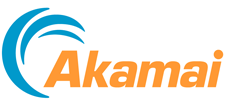
- Mirai “DNS Water Torture” attacks target the financial services industry
- Report highlights a 35 percent year-over-year increase in total web application attacks from Q1 2016
 Akamai Technologies has released its First Quarter, 2017 State of the Internet / Security Report. The report, using data gathered from the Akamai Intelligent Platform, provides analysis of the current cloud security and threat landscape, as well as insight into attack trends.
Akamai Technologies has released its First Quarter, 2017 State of the Internet / Security Report. The report, using data gathered from the Akamai Intelligent Platform, provides analysis of the current cloud security and threat landscape, as well as insight into attack trends.
“If our analysis of Q1 tells us anything, it’s that risks to the Internet and to targeted industry sectors remain and continue to evolve” said Martin McKeay, senior security advocate and senior editor, State of the Internet / Security Report. “Use cases for botnets like Mirai have continued to advance and change, with attackers increasingly integrating Internet of Things vulnerabilities into the fabric of DDoS botnets and malware. It’s short sighted to think of Mirai as the only threat, though. With the release of the source code, any aspect of Mirai could be incorporated into other botnets. Even without adding Mirai’s capabilities, there is evidence that botnet families like BillGates, elknot, and XOR have been mutating to take advantage of the changing landscape.”
Highlights from Akamai’s First Quarter, 2017 State of the Internet / Security Report include:
DDoS Attacks
- Mirai DNS Water Torture Attacks, a DNS query flood included in Mirai malware, targeted Akamai customers in the financial services industry. Most of the impacted DNS servers received queries at an even rate during the attacks, except for an attack observed on January 15, 2017 when one of three DNS servers received 14 Mbps of attack traffic. The attacks can create denial of service outages by consuming the target domain’s resources in looking up randomly generated domain names in great numbers.
- Reflection attacks continued to comprise the largest number of DDoS attack vectors and accounted for 57 percent of all mitigated attacks in Q1 2017, with Simple Service Discovery Protocol (SSDP) reflectors as the biggest source of attacks.
Web Application Attacks
- The United States remained the top source country for web application attacks, showing another significant year-over-year increase — up 57 percent from Q1 2016.
- The top three attack vectors used against web applications in Q1 of 2017 were SQLi, LFI and XSS.
- The Netherlands, in second for the top source of web application attacks of Q1 2017, dropped to 13 percent from 17 percent in the previous quarter, remaining a consistent source of attack traffic and a large proportion of attacks from a country of only 17 million citizens.
Top Attack Vectors
- UDP fragment, DNS and NTP maintained their positions as the top three DDoS attack vectors, while reserved protocol floods and connection floods were also on the Q1 2017 attack vectors list.
- The Q1 2017 top three most frequent attack vectors per week were ACK, CHARGEN, and DNS.
- New reflection attack vector Connectionless Lightweight Directory Access Protocol (CLDAP) was discovered and has been observed producing DDoS attacks comparable to DNS reflection with most attacks exceeding 1 Gbps.
Download the latest State of the Internet / Security Report for data, analysis, and graphics at akamai.com/stateoftheinternet-security.
About Akamai
As the world’s largest and most trusted cloud delivery platform, Akamai makes it easier for its customers to provide the best and most secure digital experiences on any device, anytime, anywhere. Akamai’s massively distributed platform is unparalleled in scale with over 200,000 servers across 130 countries, giving customers superior performance and threat protection.
Akamai’s portfolio of web and mobile performance, cloud security, enterprise access, and video delivery solutions are supported by exceptional customer service and 24/7 monitoring. To learn why the top financial institutions, e-commerce leaders, media & entertainment providers, and government organizations trust Akamai please visit www.akamai.com, blogs.akamai.com, or @Akamai on Twitter.





